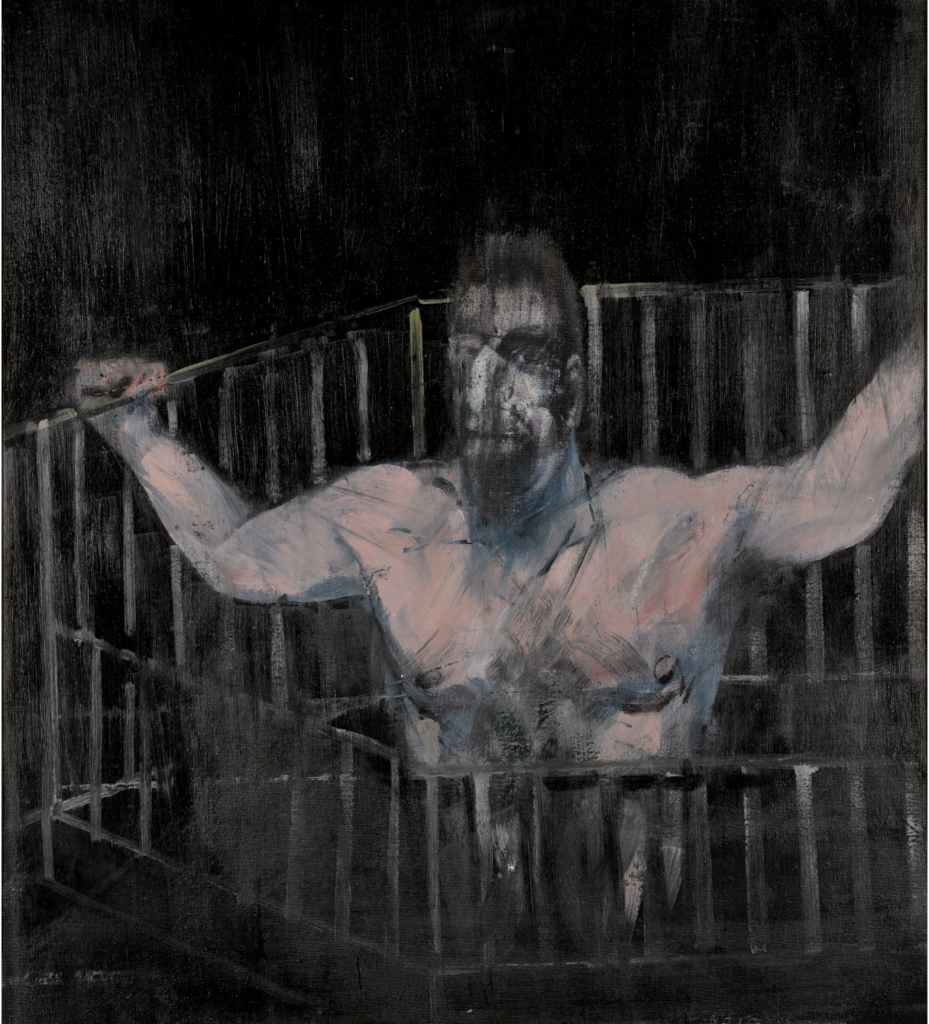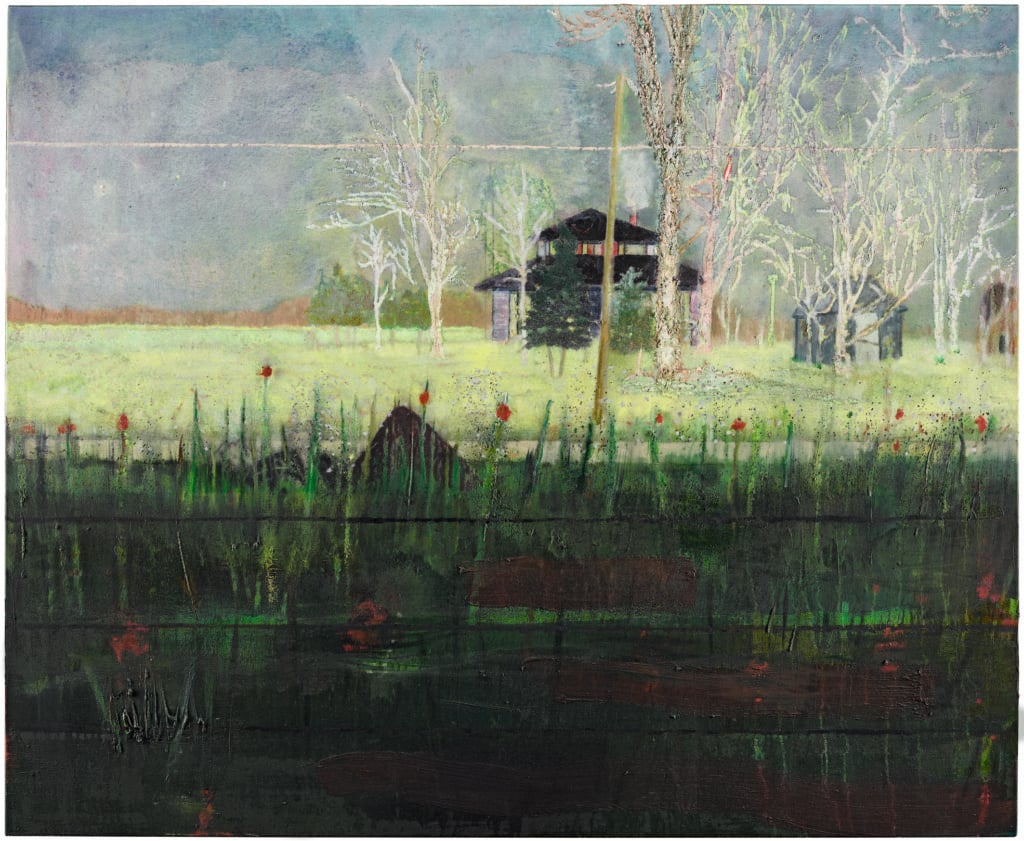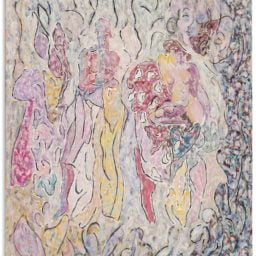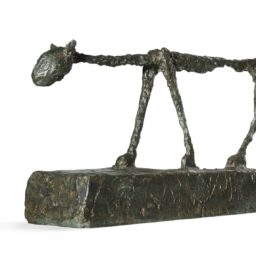An intriguing calendar contest got underway this evening when Sotheby’s opened London’s summer season of contemporary art sales.
Last year, in spite of Britain’s other high-toned seasonal attractions—Ascot, Wimbledon, and the Masterpiece fair—Christie’s dropped its summer sale in favor of building out its Frieze Week sales in October. That rewarded the house with a £177.2 million ($234.32 million) series of auctions in October, giving it a slight lead over Sotheby’s combined June and October turnover of £169 million ($224 million). This year, Christie’s will stage a summer sale in London, but at a far lower value than usual of under £10 million ($13 million). Nevertheless, Sotheby’s was looking to build up a significant lead with this evening’s auction to go into the October sales with a better chance of coming out on top.
So the house put together a 44-lot sale (pretty much the same as last year) with an £80 million to £108 million ($106 million to $143 million) estimate that was nearly double that of last June’s. Whereas last June they had no £10 million-plus sales, this year they had two, helping the house to bring in a £110 million ($146.4 million) total—the third-highest for a June sale at Sotheby’s London. (Sold prices include buyers’ premium; estimates do not.)
A key factor was the increased number of guarantees. As with Sotheby’s lackluster Impressionist and Modern sale, in which guarantees were used to beef up the offerings, more than half of the lots were guaranteed. The total value of the low estimates of all the guaranteed lots was £67.2 million ($92 million), or an unusually high 84.3 percent of the low estimate for the whole sale combined. How many observers, one wondered, were guarantors (or their representatives) just watching to see if they had made any money on the upside of the guarantee? On the whole, they would have been pretty happy tonight, as only eight of the 25 lots bumped along at the bottom or below the low estimate, indicating that they probably sold to the guarantor. The guarantees also contributed to the high sell-through rate, in which only one lot was unsold.
The sale began sweetly with a record £274,000 ($362,324) for a red sand painting by Jennifer Guidi in only her second outing at auction, followed by the first Sam Gilliam abstraction at auction in London, which attracted bidding from art advisor Wentworth Beaumont before selling above-estimate for a record £910,000 ($1.2 million) to an Asian phone bidder. A Basquiat, meanwhile, bought in 1999 for £157,000, sold for a tidy £3.9 million ($5 million).

Yves Klein’s Untitled Anthropometry (Ant 5) (1962), est.£5.5 million to £7.5 million, sold for £6,771,200. Courtesy of Sotheby’s.
Also looking to score a profit, though not identified in the catalogue, was British jewelry dealer Laurence Graff. Graff’s main sale was a large anthropomorphic spray painting of a woman by Yves Klein that he had bought at Christie’s London in 2010 for £4.1 million. There have been no major Klein sales at auction lately, but Christie’s found a guarantor to back the painting, and it sold within estimate for £6.8 million.

Lucian Freud’s Portrait on a White Cover (2002-03), est. £17 million to £20 million, sold for £22,464,300. Courtesy of Sotheby’s.
In a change from last summer Sotheby’s sale, which was dominated by American artists, this year five of the top 10 lots were by British artists. Lucian Freud’s Portrait on a White Cover, a late work from 2002-03 concerning his favorite subject, the female nude. His record of $56 million was paid by Roman Abramovich at Christie’s New York in 2015 for the substantial nude Benefits Supervisor Resting (1994), though the Sotheby’s portrait would be better compared—in terms of the relaxed sleeping pose and overall treatment—with a much smaller Naked Girl (c.1974) that sold at Christie’s London in 2012 for £4.3 million. Inch for inch, the £17 million to £20 million ($23 million to $26 million) estimate seemed reasonable, therefore, and it brought competition from both his dealers at Acquavella Galleries and bidders from Asia before selling to a phone bidder for £22.5 million ($29.8 million).

David Hockney’s Double East Yorkshire (1998), est. £10 million to £15 million, sold for £11,287,200. Courtesy of Sotheby’s.
The £10 million to £15 million ($13 million to $20 million) estimate on David Hockney’s diptych Double East Yorkshire (1998) reflected the upward spiral in prices, especially for the post-1960s Pop work, that has been characterizing the artist’s market recently. The 12-foot, 8-inch panorama is comparable with a 1990 Santa Monica landscape that fetched a record $28.4 million in New York in May, and was last auctioned in 2013 when it was bought, reportedly by an Asian buyer, for £3.4 million. This time it failed to ignite competition and sold, probably to the guarantor, for £11.3 million ($15 million)—handing the seller a very good return on their investment.
Also jumping on the Hockney bandwagon was the actor Michael Caine, who sold a colored 1977 portrait drawing of himself with Peter Langan. Langan’s Brasserie in London was a favorite watering hole for arts celebrities. The portrait, estimated at £300,000-£500,000 ($400,000-$660,000), sold for £850,000 ($1.1 million).
Not far behind was Peter Doig’s Daytime Astronomy (Grasshopper) (1998-99), a smaller version of a larger painting, which made probably the best price for a domestically sized (i.e., under five feet each way) painting by the artist, selling within estimate for £7.7 million ($10.2 million).

Francis Bacon’s Study of a Figure, est. £3 million to £4 million, sold for £3,150,000. Courtesy of Sotheby’s.
Disappointing for its last-minute guarantor was Francis Bacon’s small, dark, and threatening 1954 painting Study of a Figure, which sold below-estimate—probably to the guarantor—for £3.1 million ($4.2 million).
The most sought-after British artist of the evening was Cecily Brown, whose two paintings were both competed for by Asian bidders, one selling for a triple-estimate £3 million ($4 million). The painting had come from a private collection (reportedly amassed by Lord of the Rings producer Michael Lynne) of 11 works by New York artists of the 1980s and ’90s, which all had third-party guarantees, and which mostly sold above estimate. A Cindy Sherman “Film Still,” for instance, was bid up by dealer Per Skarstedt before selling for £946,000 ($1.25 million).

Jean-Michel Basquiat’s Untitled (1982), est. £7.5 million to £10 million, sold for £14,674,200. Courtesy of Sotheby’s.
Other gallerists were keen on the collection too, to no avail. A large, goggle-eyed head by Basquiat saw bidding by Lévy Gorvy gallery, but that powerhouse dealership was left far behind as it sold for £14.7 million ($19 million). Another top dealer, Thaddaeus Ropac, was totally outbid for an Elizabeth Peyton portrait of punk rocker Sid Vicious, which sold for £1.1 million ($1.45 million).
The outlier in the collection, date-wise, was a 2009 painting by the African American artist Henry Taylor, who is enjoying recognition in his 60s. His elegantly dressed group of black Americans outside the C&H (Californian & Hawaiian Sugar Company) building sold to a Far Eastern telephone bidder for a record £274,000 ($362,323).
Guarantees aside, the sale was a big 77 percent step up from last summer—and a signal that Sotheby’s clearly has no intention of following Christie’s in its calendar reorganization plans. It was, said Sotheby’s Europe deputy chairman Oliver Barker, “a full vote of confidence in June.”













